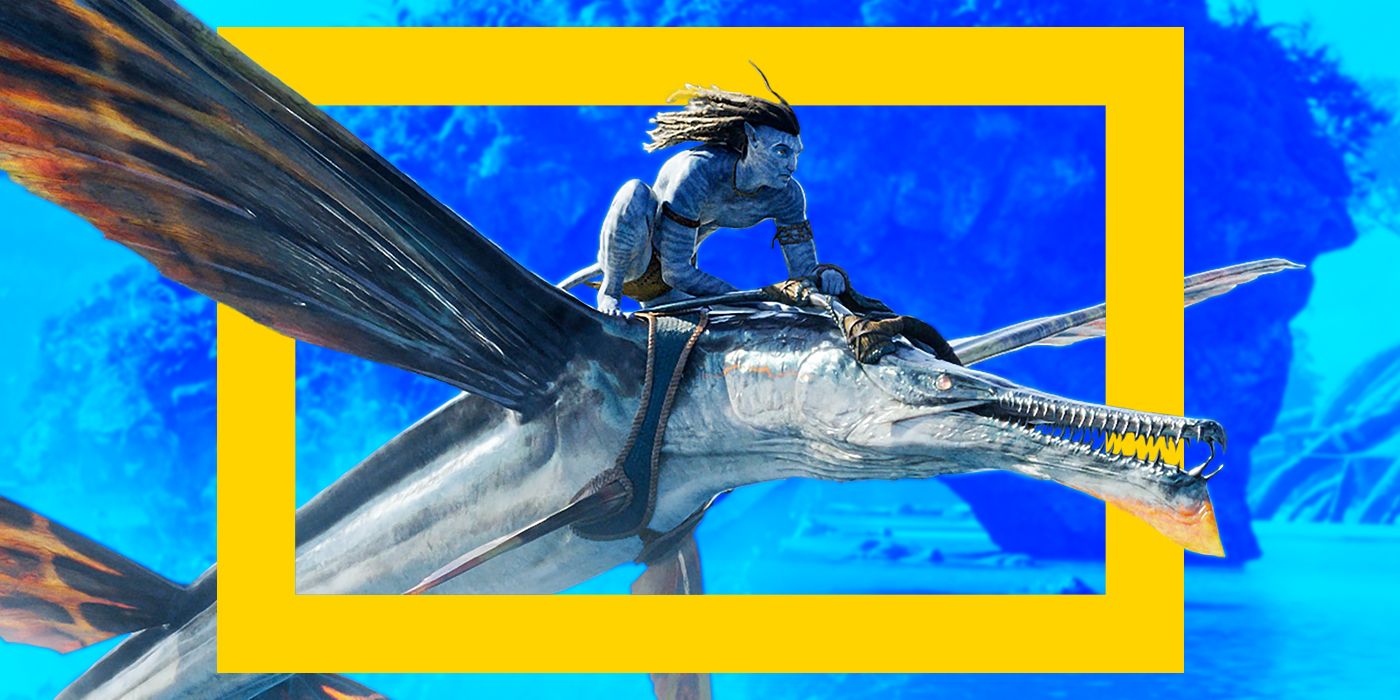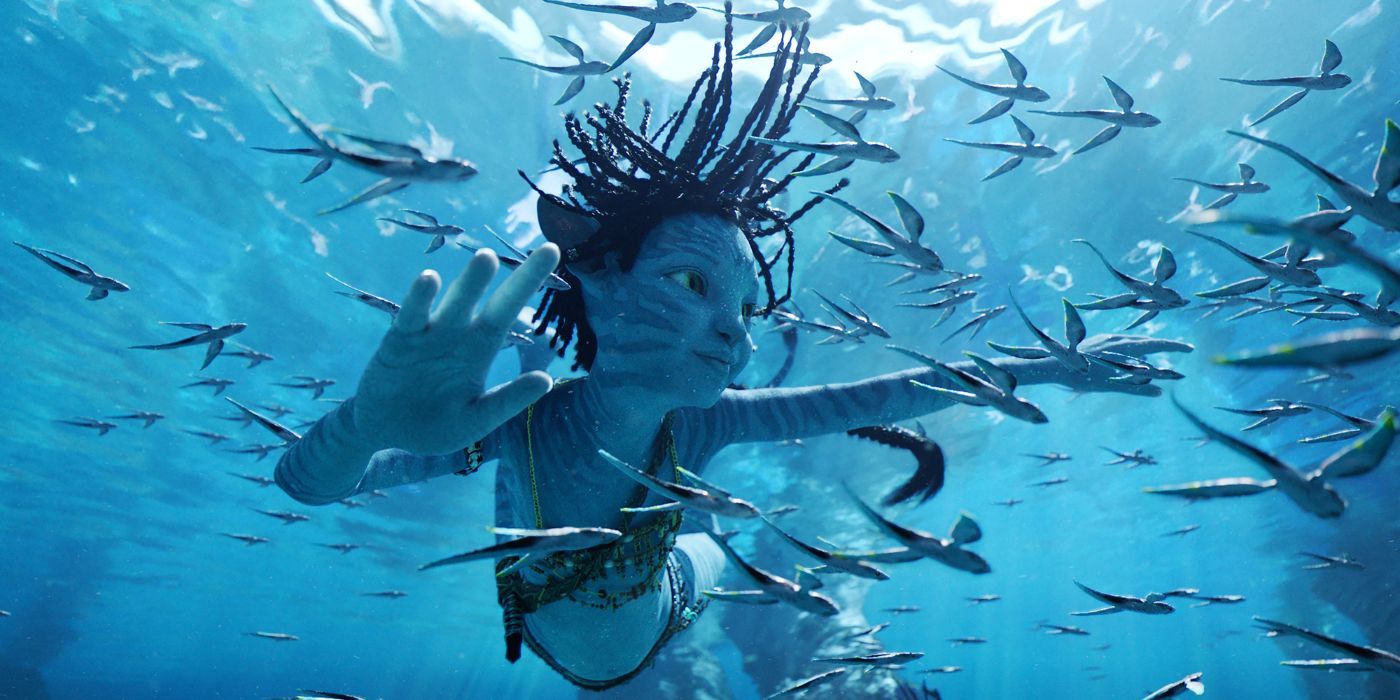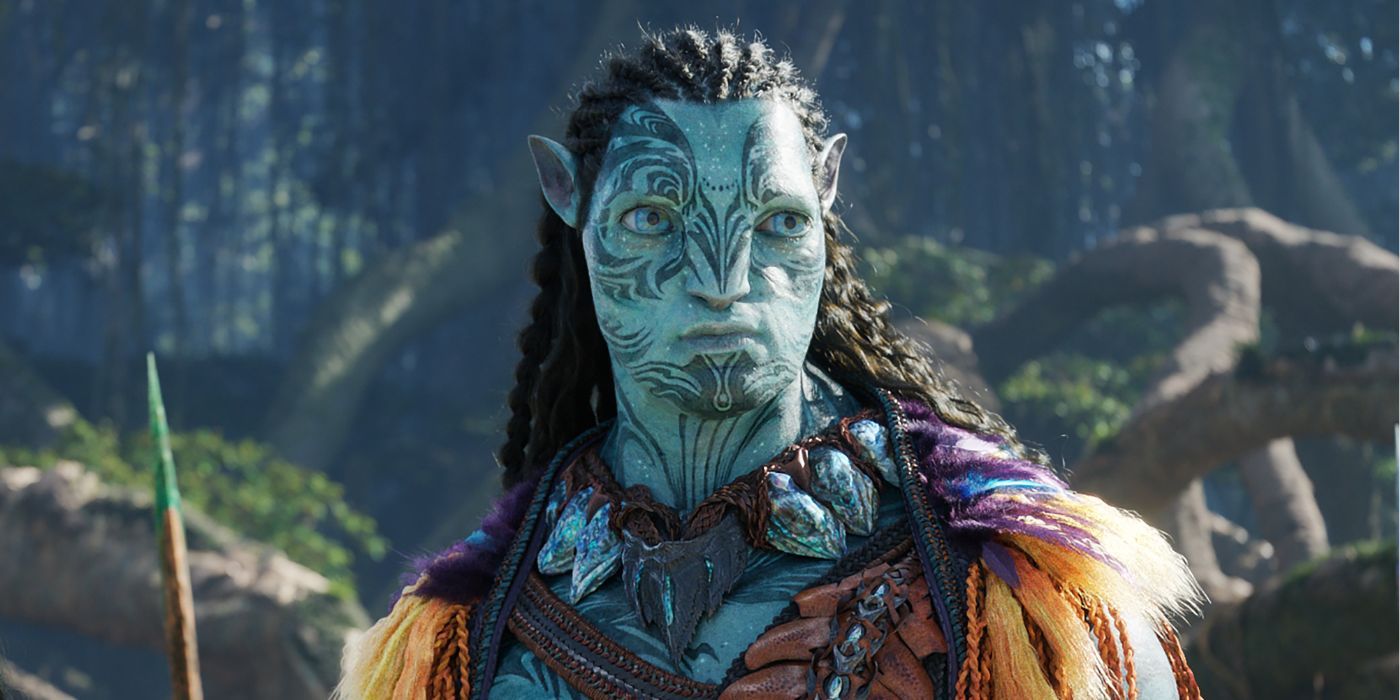Editor's Note: The following contains spoilers for Avatar: The Way of Water
Some people watch Avatar: The Way of Water in theaters to witness James Cameron’s masterful action set pieces with the best sound and image quality. Many franchise fans are also excited to see how the war between Na’vi and humans will develop in the future. The Way of Water also turned haters into devotees after paying more attention to character development. Still, just like in the first movie, Avatar: The Way of Water is best when it explores the lands of Pandora as if the film was a Nat Geo documentary.
While The Way of Water improved on 2009’s Avatar story, Cameron’s sequel is not groundbreaking in its script. The movie follows familiar blockbuster beats, and there’s little surprise when the story twists and turns. Still, for the second time in thirteen years, Cameron transports us to an alien planet that genuinely feels alive, with rich fauna, gorgeous flora, and native people who have complex beliefs and rituals. It’s no wonder that the best parts of The Way of Water happen when the film slows down and gives the audience the time to let the astonishing images of Pandora sink into our souls.
Avatar: The Way of Nat Geo
For thirteen years, Avatar was the only installment of a franchise that’s nevertheless incredibly profitable and deeply loved by fans. The technological novelty of well-made 3D films can explain part of the first movie's success. However, if Pandora keeps fascinating us after so long, it is because Cameron made more than a film, he actually built an entire alien planet with natural wonders that invite fans to imagine which new wonder might be hidden in the distant moon.
The first movie’s story is often accused of being shallow, and there’s some truth to this kind of criticism. Even so, rarely a single film was able to make the audience feel part of another planet. Together with Jake Sully (Sam Worthington), we were invited to discover the creatures that inhabit the lands, what kind of flowers we can find, and how the native people of Pandora have built entire cultural systems to interpret the world around them. Pandora’s lasting appeal doesn’t come from the story or the anti-colonization message at its core. It comes from how the film invites us to be part of a fantastical planet filled with wonder and surprise.
Cameron knows what we really loved in 2009’s Avatar. That’s why the filmmaker leaned heavily on the Nat Geo potential of Avatar: The Way of Water. After a quick first act that introduces the sequel’s characters and stakes, Jake, Neytiri (Zoe Saldana), and their children abandon the Omaticaya clan and seek refuge with the Metkayina. The change of scenery forces the entire Sully family to learn the costumes of a new clan while also giving the film the moments of respite it so desperately needs for us to explore Pandora.
In a Way, 'The Way of Water' Does Have a Documentary Aspect to It
While the Omaticaya live in the forest, the Metkayina are ocean people, building villages in an archipelago composed of hundreds of small islands. Since the Metkayina people have lived close to the water for centuries, their bodies and culture have adapted to this environment. So, while 2009’s Avatar introduced the Na’vi, The Way of Water finds the perfect excuse for us to learn a new culture and bask in the glory of Cameron’s ultradetailed world. And since the Metkayina’s way of life is different from the Omaticaya, we are also presented with new animals, such as the mighty swimming mounts of the Reef People and the Tulkuns, whale-like beasts that bond with Na’vi and forge everlasting friendships.
While there’s conflict and danger in Avatar: The Way of Water, the movie shines the brightest when it focuses entirely on the Metkayina, their culture, and the biome surrounding the Reef People’s islands. And thanks to its three hour runtime, there’s plenty of time to spend just swimming in the ocean, observing the chant of the Tulkun, and learning how the Na’vi faith gains new outlines in Metkayina villages. Just like a Nat Geo documentary allows us to discover new cultures and the secret life of wild animals, a good chunk of Avatar: The Way of Water is dedicated to exploring Pandora. And since the alien moon is blooming with life, our new favorite activity is uncovering the secrets of Cameron’s monumental work.
Avatar: The Way of Water is currently available in theaters.



